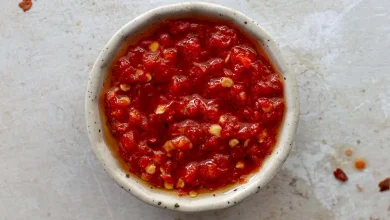🍂 Autumn Leaves 🍁
Autumn leaves refer to the colorful, falling leaves of deciduous trees during the fall season. This natural phenomenon is both visually stunning and symbolically significant, often associated with the transition from the warm months of summer to the cooler days of autumn. Here’s a comprehensive response with lots of information:
📜 History:
The beauty of autumn leaves has been celebrated across various cultures and eras. People have long marveled at the vibrant colors and the cyclical nature of this natural spectacle. In many cultures, it is a symbol of change, transition, and renewal. For example, in Japan, there’s a tradition called “Momijigari,” which involves going out to view and appreciate the changing colors of autumn leaves, especially the fiery red of maple leaves.
🍂 Components:
Autumn leaves are primarily composed of plant tissues, particularly the leaves of deciduous trees. These leaves contain pigments that give them their characteristic colors. The main pigments responsible for the stunning hues of autumn leaves are chlorophyll (green), carotenoids (yellow and orange), and anthocyanins (red and purple).
🍁 Steps to Prepare Autumn Leaves:
-
Collection: Gather fallen leaves from various trees. Be mindful of where you collect leaves, as some areas may have restrictions on leaf collection, and it’s essential to respect the environment.
-
Sorting: Separate leaves by their color and type. This can help you create aesthetically pleasing arrangements or crafts.
-
Drying: Lay the leaves on a flat surface and allow them to air dry for several days. Pressing them between the pages of a heavy book can help preserve their shape.
-
Preservation: If you want to keep the leaves for an extended period, consider laminating them, using wax paper, or applying a sealant to prevent decay.
-
Crafts and Decor: Once your leaves are dried and preserved, you can use them for various creative purposes. They can be incorporated into art projects, home decor, or even as part of a seasonal table setting.
-
Composting: If you’re not interested in keeping the leaves, consider composting them. Fallen leaves are an excellent source of organic matter for your compost pile.
🕐 Time Needed:
The time required to prepare autumn leaves depends on the method you choose and the intended purpose. Collecting leaves is a relatively quick task. Drying may take several days to a week. If you plan to preserve the leaves or use them in crafts, the entire process can span a few weeks to a month, considering drying and any additional crafting time.
Autumn leaves are a beautiful reminder of the changing seasons and nature’s ever-renewing cycle. 🍂🍁 Embrace their beauty, and get creative with how you can incorporate them into your life, whether by simply admiring them or using them in crafts and decor. 🎨🍂
Certainly, here’s some nutrition facts and health information related to autumn leaves:
🍂 Nutrition Facts:
Autumn leaves, while beautiful, aren’t typically consumed as a food item in most cultures. Therefore, they do not have established nutritional content like traditional fruits, vegetables, or edible plants.
🍂 Health Information:
-
Non-Edible: Autumn leaves are generally not considered edible for humans. Some leaves may contain toxins or chemicals that can be harmful if ingested. It’s essential to exercise caution and not consume them.
-
Aesthetically Pleasing: While not a source of nutrition, autumn leaves can have positive effects on mental health. The vibrant colors and natural beauty of falling leaves are known to evoke feelings of happiness, nostalgia, and tranquility. Taking walks in parks or forests during the fall season can be a great way to de-stress and enjoy the visual beauty of autumn.
-
Environmental Benefits: Autumn leaves, when left to decompose naturally, contribute to the health of the ecosystem. They enrich the soil with organic matter, which is beneficial for plant growth and biodiversity. Additionally, they can be a source of habitat for various insects and small organisms.
-
Art and Craft: While not a dietary source of nutrition, autumn leaves can be used for creative and decorative purposes. Engaging in arts and crafts can have positive mental and emotional benefits.
Remember that when it comes to foraging or using leaves for any purpose other than decoration, it’s crucial to ensure that the leaves you handle are safe and free from pesticides or other contaminants. If you’re considering incorporating leaves into your diet, it’s advisable to consult with a knowledgeable expert in foraging and edible plants to identify safe options in your region. 🍂🍁



